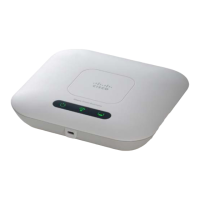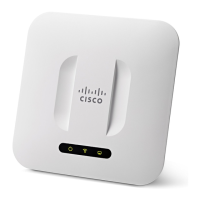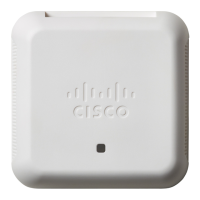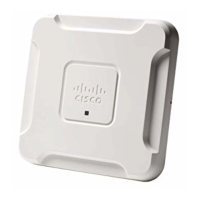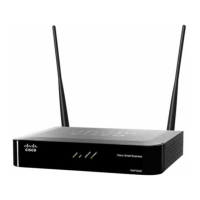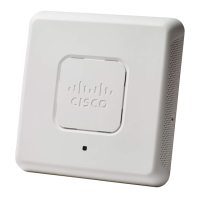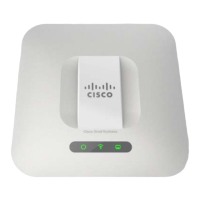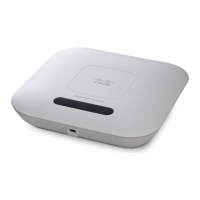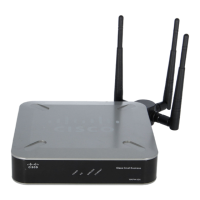Client Quality of Service
Policy Map
Cisco Small Business WAP371 Wireless Access Point Administration Guide 114
7
• VLAN ID—A VLAN ID to be matched for packets. The VLAN ID range is
from 0 to 4095.
The following Service Type fields show for IPv4 only. You can specify one type of service
to use in matching packets to class criteria.
• IP DSCP—A differentiated services code point (DSCP) value to use as a match
criterion:
- Select from List—A list of DSCP types.
- Match to Value—A DSCP value that you specify, from 0 to 63.
• IP Precedence (IPv4 only)—Matches the packet's IP Precedence value to the class
criteria IP Precedence value. The IP Precedence range is from 0 to 7.
• IP TOS Bits (IPv4 only)—Uses the packet's Type of Service bits in the IP header as
match criteria.
The IP TOS bit value ranges between (00 to FF). The high-order three bits represent the
IP Precedence value. The high-order six bits represent the IP Differentiated Services
Code Point (DSCP) value.
STEP 3 Click Save. The changes are saved to the Startup Configuration.
NOTE To delete a class map, select it in the Class Map Name list and click Delete. The class map
cannot be deleted if it is already attached to a policy.
Policy Map
Packets are classified and processed based on defined criteria. The classification criteria is
defined by a class on the Class Map page. The processing is defined by a policy's attributes on
the Policy Map page. Policy attributes may be defined on a per-class instance basis and
determine how traffic that matches the class criteria is handled.
The WAP device supports up to 50 policy maps. A policy map can contain up to 10 class
maps.
To add and configure a policy map:

